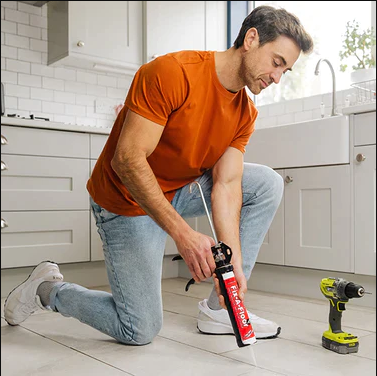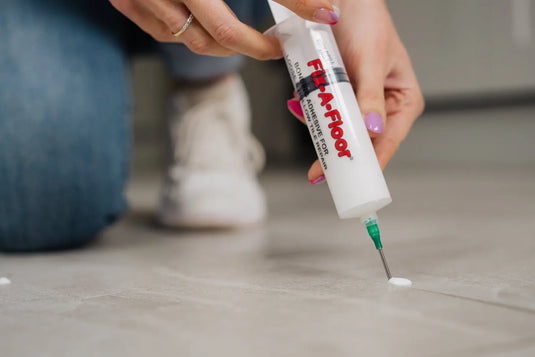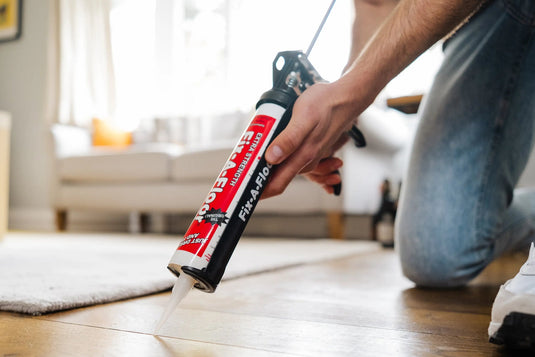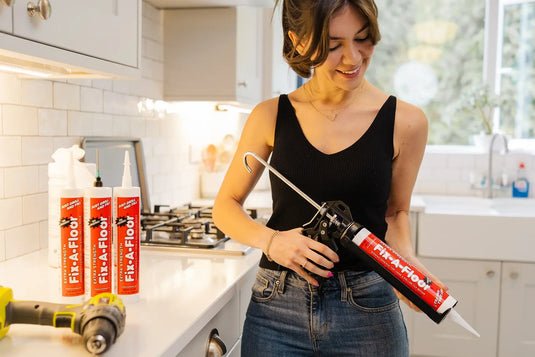How to Stop Laminate Floors from Creaking
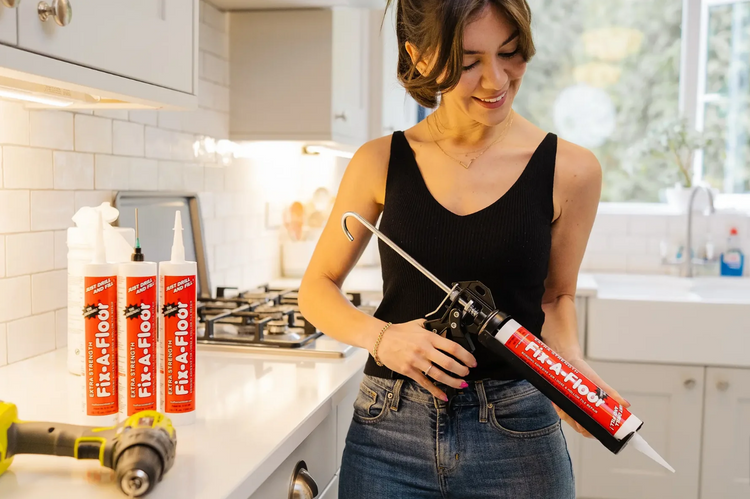
A laminate floor creaking every time you step on it is a real nuisance. Your home comfort is essential, and creaking laminate floors can have a detrimental impact on this. Understanding why laminate flooring creaks and the effective methods of preventing and stopping this annoyance is a must for any homeowner. Sometimes, creaking in your flooring can be an indicator of broader issues that may also need addressing. Thankfully, at Fix-A-Floor, we have a pretty good idea of what typically causes creaky laminate, as well as some preventative maintenance and DIY hacks.
Stay with us to find out what we’ll be covering and learn how to prevent and fix your crackling laminate floor.
Your Complete Guide to Fix Crackling Laminate Floors
We’ll be covering:
- Why does laminate flooring creak?
- Preventative maintenance to fix creaking laminate floor
- DIY solutions for squeaky laminate floor
- Your frequently asked questions about laminate floor creaking
Understanding Laminate Flooring Creaks
With laminate floors being such a popular choice thanks to their durability and affordability, it can be a disappointment for homeowners to notice signs of creaking or movement beginning. They may not seem like much at the start, but over time squeaky laminate floors will become more noticeable. Sometimes creaks are just that – annoying noises that disrupt your home comfort but other times, there could be substantial issues that need to be addressed.
So, what causes laminate floor creaking?
Causes of Laminate Floor Creaks
Why does laminate flooring creak? Well, several things can cause creaking in laminate floors, including:
- Subfloor Issues: The first cause has nothing to do with the laminate floor panels themselves. Uneven subfloors or inadequate preparation can lead to friction between the laminate planks and the subfloor, causing creaks and other noises.
- Humidity and Moisture: Secondly, laminate is sensitive to changes in humidity and moisture. These changes cause the laminate flooring to expand and contract over time, resulting in creaking.
- Improper Installation: Incorrect installation methods, such as insufficient acclimatisation or improper spacing, can also contribute to creaking in your laminate floor.
Preventative Measures
Now that we have explored the main causes of laminate floor creaking, what are the preventative measures to avoid these creaks and stop laminate noise for good?
Proper Installation and Subfloor Preparation
Proper installation is key to preventing creaks. It is essential to ensure your subfloor is clean, level and free from debris, which can be achieved by using appropriate underlayment materials to reduce friction and noise. Uneven areas are quite typical and addressing them by levelling leads to a more secure subfloor and reduces the likelihood of a squeaky laminate floor.
Reducing Indoor Humidity and Moisture
It can be difficult to control the indoor humidity of your home, especially when the seasons and temperatures nowadays change so dynamically. However, maintaining a consistent indoor humidity level of around 40-60% will help prevent the laminate from contracting and expanding excessively.
Adding a dehumidifier to your home, particularly during the wetter winter months, will help keep humidity under control and mitigate creaking in laminate floors.
In addition to humidity, make sure any spilled drinks or excess moisture on the floor is cleaned up ASAP to prevent damage that can lead to creaking and other noises.
DIY Solutions for Silent Laminate Floors
In this guide, we have several DIY solutions for silent laminate floors that even the most novice DIYers can do.
Lubricating Floor Joints
You can silence creaks by reducing friction with lubrication and there are several easy-to-obtain and use examples. Talcum powder or powdered graphite can be applied to the joints between the laminate planks to reduce friction. Alternatively, a fluid lubricant such as WD-40 or PTFE spray can be used, but we’d recommend testing these on the surface of your laminate first just to make sure they won’t damage or stain it.
Any lubricant you use will need to be topped up on a regular basis, however, and it won’t be a permanent fix for squeaky floors.
Tightening Loose Laminate Floorboards
Tightening loose laminate floorboards can often be a lengthy process, with the need for several tools, such as a pry bar or crowbar, wood glue, clamps, a damp cloth, a hammer or mallet, a tapping wood block and a utility knife. While it is a relatively simple DIY process, you’ll often have to lift and remove the floorboards entirely to sort the problem.
So, is there an easier method to fix creaking laminate flooring without having to remove the boards?
Using Filler for Gaps
Filler is easy to use, and the right ones will be a long-lasting solution to noise-causing gaps. Fillers, also known as bonding adhesives, can be inserted into holes drilled in the laminate flooring and used to fill the gaps between the laminate and subfloor. Fix-A-Floor Adhesive is one of the best and most affordable bonding adhesives on the market and is perfect for filling gaps and, even better, it dries clear once cured. All you’ll need to fix crackling laminate floors is a caulk gun, chalk or tape, a weight such as a bucket of water and a tube of Fix-A-Floor Adhesive, or one of our laminate floor repair kits.
- Identify your problem gaps by tapping them with a broom handle or just your fingers, looking and listening for loose planks. Mark any that you spot with chalk or tape.
- Carefully fill the gaps with Fix-A-Floor Adhesive, taking care to avoid making too much mess and wiping away any excess as you go.
- Push the laminate back into position and hold it for 30 to 60 seconds to allow the adhesive to take hold.
- Next, add your weight to the treated areas and leave for a minimum of 24 hours.
- Finally, remove the weight and enjoy your squeak-free floor!
The adhesive takes just 24 hours to set and won’t require you to remove any floorboards, saving you time and additional replacement costs. You’ll have silent laminate flooring after using this innovative solution for laminate flooring maintenance. For help on how to use this adhesive, check out our guide here.
Summary
By understanding the causes of laminate floor creaks and implementing preventative measures, such as proper installation, humidity control and diligent maintenance, you can reduce or eliminate creaking sounds altogether.
Additionally, the DIY solutions we have mentioned, including lubricating floor joints, tightening loose boards and using Fix-A-Floor Bonding Adhesive, offer practical ways to enjoy a silent and comfortable living space.
frequently asked questions
Why is my Laminate Floor Creaking, and How Can I Prevent it?
Your laminate flooring is creaking because the boards are moving against each other or against the subfloor. There are a number of things that can cause this, including excessive humidity or temperature changes, poor installation or a damaged subfloor. To prevent it, you can try DIY solutions such as lubricating or tightening the boards or opt for a more permanent solution like Fix-A-Floor’s Bonding Adhesive.
Can I Fix Creaking Laminate Floors with DIY Solutions?
You can, although some are more effective than others. Methods such as lubricating the floorboards might provide a short-term solution, but for a long-term fix, try Fix-A-Floor Bonding Adhesive. Check out our guide to see how.
What Causes Gaps in Laminate Floors, and How Can I Use Filler to Fix Them?
Gaps in your laminate floor can make it squeak or crackle. These gaps could be caused by a few things, including fluctuating indoor humidity or heat levels, improper installation, or damage to your subfloor. Thankfully, these gaps can be fixed using a filler like Fix-A-Floor’s Bonding Adhesive.
How Can I Maintain a Silent and Comfortable Living Space with Laminate Flooring?
To prevent your laminate flooring from becoming a constant source of irritation, you need to stop it from moving too much. It’s movement and gaps that cause the squeaking and crackling that so many of us dread. One of the best ways to prevent your new laminate floor from creaking is to ensure it is installed correctly in the first place and that your subfloor is in good condition. However, if you notice squeaking developing after your flooring has been installed, try Fix-A-Floor’s Bonding Adhesive. It’s easy to use and will provide a long-term DIY solution.
What Are the Steps for Tightening Loose Laminate Floorboards, and is it a DIY-Friendly Process?
The steps for tightening loose laminate are relatively simple. You’ll need a hammer, a chisel, a crowbar or prybar, a vacuum cleaner or dustpan and brush, and a tapping block (a piece of wood offcut will do).
- Establish which way the laminate boards have moved to form the gap or gaps
- Remove the skirting board on the side that the boards have moved towards with either your hammer and chisel or a crowbar
- With your vacuum cleaner or dustpan and brush, clean the gap between the boards to make sure nothing prevents it from closing
- Knock the offending boards back into place with your hammer and tapping block
- Finally, reattach your skirting board
With your laminate boards back in place, the best way to prevent them from moving again or becoming squeaky is to use a filler such as Fix-A-Floor’s Bonding Adhesive.





